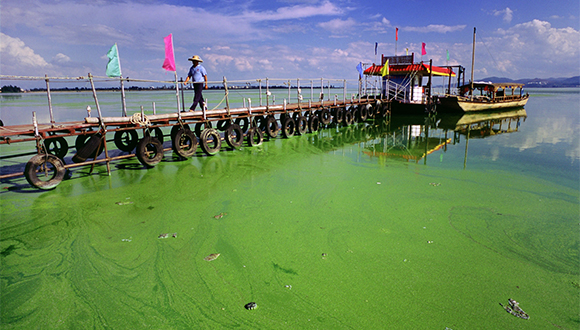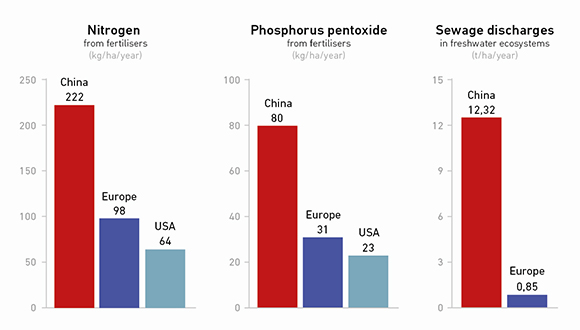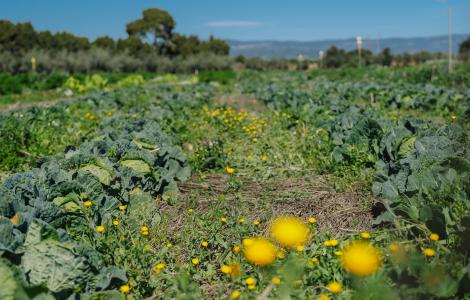Phosphorus, once only a nutrient, has become a contaminant on a global scale
Freshwater ecosystems near densely populated areas have levels of phosphorus which are very high and out of balance with nitrogen levels. This has resulted in altered ecosystem functioning, lower water quality, and has made water conservation more difficult.

Life is conditioned by the proportions of nitrogen (N) and phosphorous (P) available in the environment. Normally, there is much more nitrogen than phosphorus, and species evolved to exist under such conditions. However, if this proportion changes, organisms’ capacity for growth can be altered, possibly posing consequences for the maintenance of basic vital functions.
A study published in the journal Ecology Letters including co-authors Josep Peñuelas, CREAF and CSIC researcher, and Jordi Sardans, CREAF researcher, has analyzed the proportions of nitrogen and phosphorus in different freshwater ecosystems around the world. In the article the researchers show that this proportion is being altered in river basins where human populations are high and have significant impacts on ecosystems.
The special role of phosphorus has changed from a desirable nutrient to a contaminant in urban areas with high population density and areas with intensive agriculture.
“If a river or lake is in good condition, we usually find that there is much more nitrogen than phosphorus, and if the growth of algae and aquatic plants is limited it is usually due to a lack of phosphorous,” explains Peñuelas. However, the constant dumping of detergents, pesticides, fertilizers, and urban and industrial wastewater in many river basins throughout the world adds huge quantities of phosphorous, which is accumulating much more quickly than nitrogen or other elements such as potassium. With this, the special role of phosphorus has changed from a desirable nutrient to a contaminant in urban areas with high population density and areas with intensive agriculture.
Under natural conditions, algae tissues contain seven times more nitrogen than phosphorous, and in terrestrial plants this proportion can be as high as 15 times greater. “Most soils and rocks contain low amounts of phosphorous, an element which has very low solubility in water. For this reason, freshwater species have become adapted to phosphorous accumulation and efficient recycling,” says Sardans. The current problem is that with the contamination of lakes and rivers, these species have huge amounts of phosphorous at their disposal and accumulate much more than they need. According to the analysis carried out in the study, which included data from the previous 30-40 years, this problem worsens with higher indices of human activity and population density near river basins.
More nitrogen and phosphorous means less oxygen
Such problems may be transferred to other nearby ecosystems and affect areas of high importance to people, as well as causing reduced water quality and availability.
Excessive quantities of nitrogen and phosphorous favor a process called water eutrophication. Eutrophication is caused when excessive fertilization causes explosive growth of some algae species near the water surface which results in low light infiltration, causing difficulties for some species living in lower strata which are then unable to carry out photosynthesis, and also results in severe depletion of dissolved oxygen. This contamination of nitrogen and phosphorous also affects aquatic plants which float on the surface or live submerged in the water. “We believe that these algae and aquatic plants play a fundamental role in the maintenance of water quality and the biodiversity in freshwater ecosystems since they form the base of a large food web which includes a great number of organisms,” says Josep Peñuelas.
Jordi Sardans also warns that such problems may be transferred to other nearby ecosystems and affect areas of high importance to people, as well as causing reduced water quality and availability. “For these reasons, it is important to continue improving the management of these nutrients worldwide,” he says.

China needs to make important improvements in wastewater management
The study highlights the need to limit phosphorus and nitrogen inputs to freshwater ecosystems. Beginning in 1990, Europe and the United States established more restrictive environmental policies along these lines and forced the relocation of many industries. As a result, nitrogen and phosphorous contamination was greatly reduced.
China, on the other hand, has experienced the opposite trend; the country has welcomed a large share of world’s industrial production, it doesn’t have effective environmental policies, and it continues to use fertilizers and pesticides which are rich in phosphorous. “China’s use of fertilizers amounts to three times more nitrogen and phosphorous than the United States, and two times that applied in Europe,” says Peñuelas. Also, the amount of untreated wastewater reaching river basins in China is 15 times higher than in Europe..
Solutions to such problems are without a doubt difficult to achieve while consumption of goods originating in China continues to grow in both Europe and the United States.
Solutions to such problems are without a doubt difficult to achieve while consumption of goods originating in China continues to grow in both Europe and the United States. “We can’t forget that a significant portion of the contamination caused in China is a result of the production of goods which are consumed here,” says Sardans.
ARTICLE
Yan, Z., Peñuelas, J., Sardans, J., et al. (2016). “Phosphorus accumulates fester than nitrogen globally in freshwater ecosystems under anthropogenic impacts”. Ecology Letters. 19: 1237–1246. DOI: 10.1111/ele.12658






